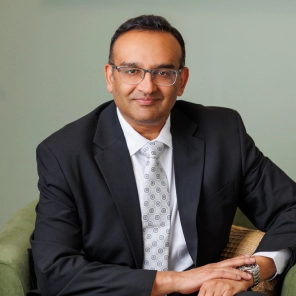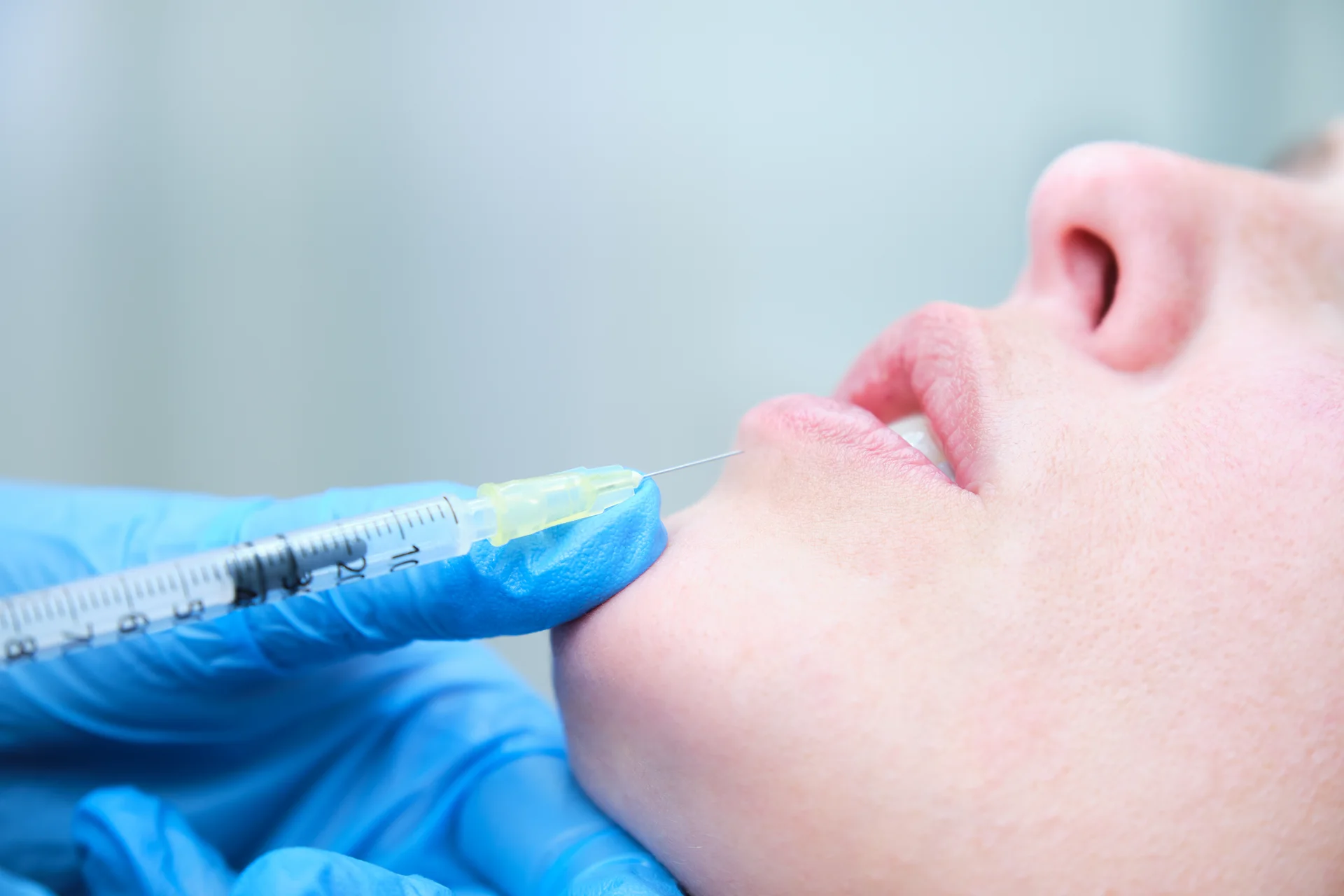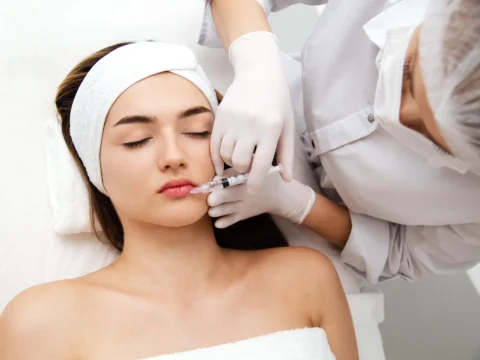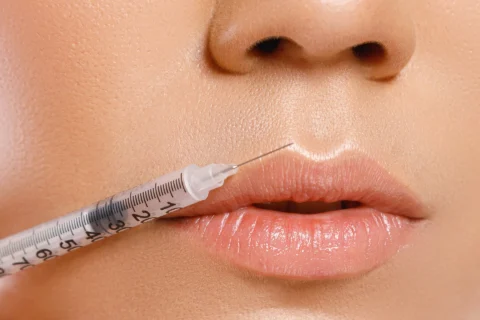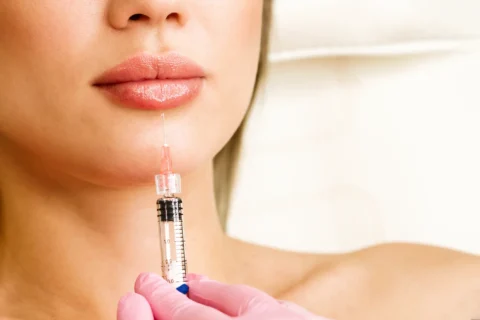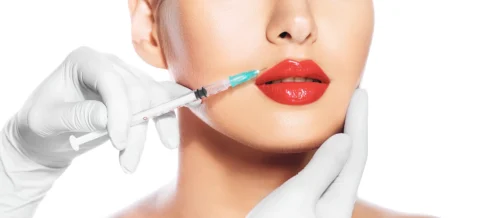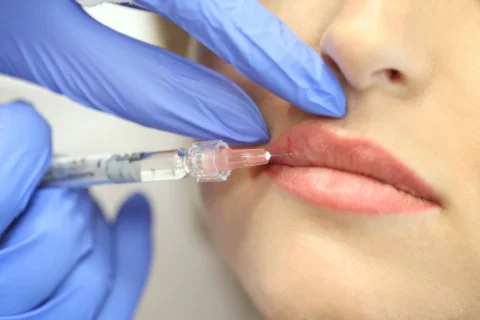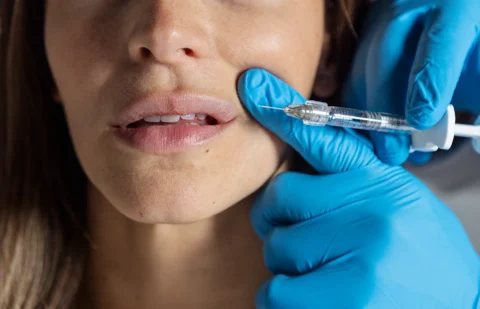If you’re thinking about dissolving your lip fillers, it’s important to know how much it might cost.
This guide explains the key factors that affect the price, including the amount of filler you have, the experience of the practitioner, where you’re getting the treatment, and how many sessions you might need.
Drawing on insights from Dr. Hardik Soni of Ethos Aesthetics + Wellness, we’ll give you a clear idea of what to expect financially when considering this procedure.
Hyaluronidase: The Key to Dissolving Hyaluronic Acid-Based Fillers
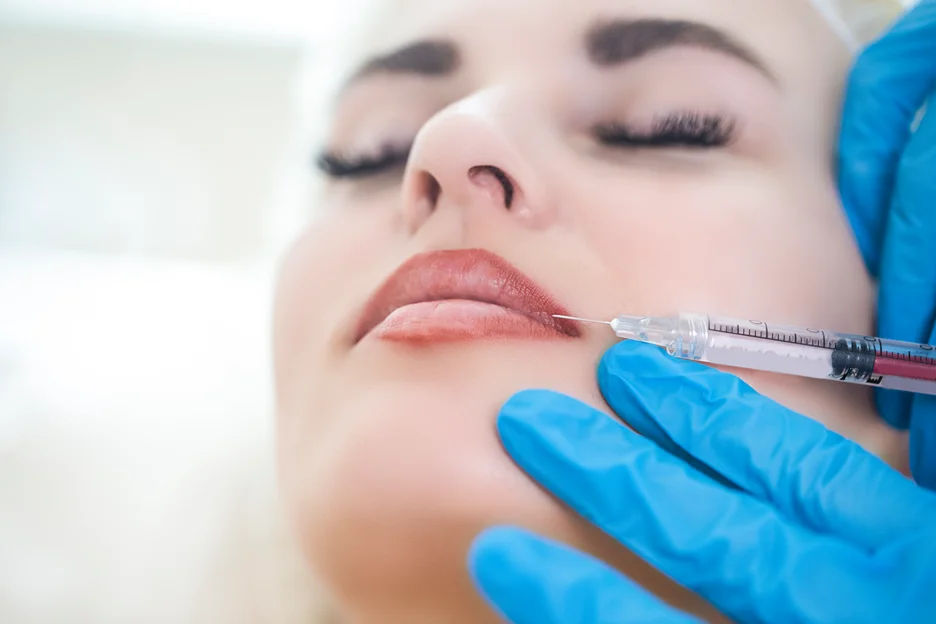
Hyaluronidase, a naturally occurring enzyme, plays a crucial role in breaking down hyaluronic acid-based fillers such as Juvéderm, Restylane, and Belotero.
Hyaluronic acid, also known as hyaluronan or HA, is a polysaccharide found naturally in the human body. This enzyme effectively targets and dissolves these fillers, making it an essential tool in aesthetic treatments.
How Does the Process of Dissolving Lip Fillers Work?
The process, as practiced by Dr. Hardik Soni at Ethos Aesthetics + Wellness, starts with applying a numbing cream to the lips.
Then, Dr. Soni injects hyaluronidase, a substance that breaks down hyaluronic acid fillers, using a fine needle. He carefully targets areas with excess filler, ensuring a balanced and natural look.
If needed, Dr. Soni may massage the lips for even distribution of the enzyme. Depending on the filler type and amount, a second session might be scheduled after 1-2 weeks for complete results.
Can You Dissolve Fillers Other Than Hyaluronic Acid-Based Ones?
Calcium Hydroxylapatite fillers (like Radiesse) and Poly-L-Lactic Acid fillers (like Sculptra) are not dissolvable with hyaluronidase. This enzyme specifically targets hyaluronic acid-based fillers. For other filler types, including Radiesse, Sculptra, silicone, and semi-permanent or permanent fillers, hyaluronidase is ineffective.
What Are the Risks and Side Effects of Dissolving Lip Fillers?
Dissolving hyaluronic acid (HA) lip fillers is typically done using hyaluronidase, a synthetic enzyme. While this method is widely considered safe and has been in use for nearly two decades, it’s important to be aware of potential risks and side effects:
- Swelling and Bruising: These are common reactions to the injection process but usually diminish within a few days.
- Allergic Reactions: There’s a possibility of an allergic response to hyaluronidase. A patch test is often conducted beforehand to mitigate this risk.
- Facial Appearance Changes: Some individuals experience adverse effects like burning sensations, loss of skin volume, neuralgia, dry eyes, headaches, facial pressure, and fatigue.
- Medical Emergencies: Immediate issues such as vascular occlusion or severe allergic reactions require urgent medical attention and often involve dissolving the filler.
- Delayed Complications: Infections or the formation of granulomas (hard lumps) are delayed complications that might necessitate dissolving the filler.
According to Dr. Soni, “While I take every precaution to avoid complications, patients considering filler dissolving should understand the risks. We review these in detail during consultations to set realistic expectations about the process.”
What Factors Influence the Cost of Dissolving Lip Fillers?
The cost of dissolving lip fillers is influenced by a variety of factors, as highlighted by Dr. Hardik Soni from Ethos Aesthetics + Wellness. These factors include:
- Amount of Filler Injected: The more filler that needs to be dissolved, the higher the cost. This is because a greater quantity of filler requires more resources and time to effectively remove.
- Practitioner’s Experience: Experienced practitioners often charge more due to their expertise and the demand for their services. Their higher rates reflect their skill and reputation in the field.
- Geographic Location: The cost of dissolving lip fillers can vary significantly based on location. In major cities and areas with higher living costs, prices tend to be higher compared to smaller towns or regions with lower living expenses.
- Type of Filler Used: Some fillers are more challenging and time-consuming to dissolve, which can impact the cost. The complexity of the procedure varies with different types of fillers.
- Number of Treatments Required: Often, dissolving lip fillers is not a one-time procedure. It may require multiple sessions to achieve the desired result, leading to increased overall costs.
Dr. Soni also stresses the significance of prioritizing the reputation of the clinic and the expertise of the injector rather than just focusing on the cost. He advises that considering these factors is essential for minimizing complications and achieving a more natural-looking result.
How Much Is the Cost of Dissolving Lip Fillers?
The cost of dissolving lip fillers varies widely and depends on several factors, such as the location and the specific medical practice. Generally, prices can range from as low as $50 to upwards of $1,625, with an average cost of around $450. To get an accurate estimate of the cost in your area, it’s best to consult directly with a qualified medical professional.
Does Insurance Cover the Cost of Dissolving Lip Fillers?
Generally, insurance does not cover dissolving lip fillers, as it is considered a cosmetic procedure. However, insurance policies vary, so it is recommended to check with your provider to confirm whether or not your plan covers this procedure.
What Should Patients Consider Before Deciding to Dissolve Lip Fillers?
Dr. Hardik Soni advises patients to consider several factors before choosing to dissolve lip fillers:
- Carefully examine your reasons for dissolving. Be sure you are looking to achieve a more natural versus overly filled appearance. Dissolving should never be done as a reaction to normal post-injection swelling and bruising.
- Realistically consider if you may want filler again soon or are better off letting it naturally absorb over 6-12 months. Dissolving too soon can be an unnecessary cost if you just need time to adjust.
- Select an injector experienced in dissolving like a board-certified dermatologist or facial plastic surgeon. Their expertise ensures proper technique and avoids over-dissolving and complications.
- Understand the process takes time for optimal, natural-looking results. One or two staged treatment sessions several weeks apart are usually needed along with massage and post-care.
- Be prepared for some residual swelling, tenderness, and occasionally unevenness for 2-4 weeks following treatment. Avoid dissolving right before important events if you want your lips to be camera-ready.
How Do the Results of Dissolving Lip Fillers Compare to Natural Absorption?
When comparing the outcomes of lip filler dissolving and natural filler absorption, Dr. Hardik Soni points out several key differences:
- Speed of Results: The dissolving process is much faster, typically taking 1-2 weeks, whereas natural reversion can take 6 months or more. This makes dissolving a quicker option for those seeking immediate changes.
- Control Over Shape: Dissolving offers more control over the final shape of the lips. Injectors can target specific areas for precise shaping, addressing issues like asymmetry or uneven filler distribution.
- Uniformity in Natural Absorption: Natural absorption happens more slowly and evenly. Over several months, the body metabolically breaks down the filler, leading to a gradual and smooth return to the original lip size and shape.
- Quality of Results with Expert Dissolving: When performed by an expert injector like Dr. Soni, dissolving can yield results very similar to natural reversion. A carefully managed approach ensures a controlled return to the lips’ former shape.
The primary benefit of opting for dissolving over natural absorption lies in the desire for rapid, significant changes or the need to correct asymmetries from uneven filler application. Dissolving provides a faster and more customizable solution in such scenarios.
What Are the Alternatives to Dissolving Lip Fillers?
Instead of undergoing a formal dissolving treatment, Dr. Hardik Soni advises some patients to consider alternatives like:
- Natural Degradation: You can choose to wait for the fillers to naturally break down over time. This is a non-invasive approach, as fillers are not permanent.
- Additional Filler Injections: For issues like asymmetry or lumpiness, an experienced cosmetic surgeon might be able to rectify these by adding more filler to balance the lips.
- Surgical Removal: As a more direct approach, surgical removal of the fillers is an option if you’re unwilling to wait for natural degradation or have more injections.
- Skin Tightening Procedures: Options like Sofwave, radiofrequency microneedling, or CO2 laser treatments can help tighten the skin, potentially enhancing the appearance of your lips.
According to Dr. Soni, “An open discussion with your injector about all your options is the key to choosing your best course of treatment.”
What Results Can Patients Expect from Dissolving Lip Fillers?
After dissolving lip fillers, patients can expect a gradual return to their natural lip appearance. The process, primarily for hyaluronic acid fillers, involves using hyaluronidase, which works over 24-48 hours. Most changes occur within the first few days, reducing swelling and size.
Within a week, lips typically regain their natural texture and shape. The final result depends on the extent of dissolving: mild treatments may retain some filler for subtle fullness, while more extensive procedures can completely restore the lips to their original state.
Dr. Hardik Soni advises patients to allow up to two weeks for the full effect, as initial temporary changes like deflation or asymmetry are common before settling into the final appearance.
What Aftercare Is Needed After Dissolving Lip Fillers?
Proper aftercare and following your provider’s instructions can help maximize dissolving results. Dr. Hardik Soni recommends his patients:
- Use cold compresses for 10 minutes at a time to reduce swelling, especially the first 1-3 days.
- Take over-the-counter pain relievers as directed to manage discomfort.
- Avoid makeup for at least 12 hours and facial products for 24 hours.
- Follow any prescribed antibiotic ointments if provided.
- Sleep face up on a few extra pillows to minimize swelling.
- Avoid strenuous activity for 2-3 days to keep the heart rate and blood pressure low.
- Refrain from excess sun exposure until the swelling fully resolves. Always wear SPF 30+.
- Follow up promptly for any post-treatment concerns or irregularities.
Properly caring for your lips in the days following dissolving is crucial for optimal results and comfort. Always contact your provider with any side effects.
Takeaways on Dissolving Lip Fillers
Properly dissolving lip fillers requires an expert injector to safely break down unwanted filler for natural-looking results. Costs vary based on location, clinic reputation, type of filler, and number of sessions needed. Some temporary swelling and tenderness are common.
Dissolving quickly restores the lips versus slow natural absorption but does not prevent future retreatment if desired. With realistic expectations and proper aftercare, most patients appreciate the dramatic yet natural enhancement dissolving provides.
FAQs
Is the process of dissolving lip fillers with hyaluronidase safe?
Yes, using hyaluronidase is generally safe, but it’s important to be aware of potential risks like swelling, bruising, allergic reactions, and other side effects. It’s crucial to have the procedure done by an experienced practitioner.
How long does it take to see results after dissolving lip fillers with hyaluronidase?
Results can be seen within 1-2 weeks, with most changes occurring in the first few days. The final outcome depends on the extent of dissolving and individual healing processes.
Can I eat and drink normally after dissolving my lip fillers?
Yes, you can eat and drink normally post-treatment. However, it’s recommended to avoid extremely hot or spicy foods and drinks for the first 24 hours to minimize irritation and swelling.
Are there any specific foods or drinks to avoid after dissolving lip fillers?
Avoid alcohol and high-sodium foods for a few days post-treatment, as they can exacerbate swelling. Also, steer clear of caffeine and high-sugar foods which can increase inflammation.
Can I wear lipstick or lip balm after the treatment?
It’s best to avoid applying any lip products for at least 12 hours after the treatment to prevent infection and allow the treatment area to heal.
Is it normal to feel lumps or unevenness after dissolving lip fillers?
Some unevenness or lumps can be normal immediately following the treatment, but these usually resolve within a few days to a week. If they persist, consult your practitioner.
How can I ensure the best results from my lip filler dissolving treatment?
Follow your practitioner’s aftercare instructions closely, use cold compresses to reduce swelling, stay hydrated, and avoid strenuous activities for a few days. If you have any concerns, don’t hesitate to contact your practitioner.
When can I consider getting lip fillers again after dissolving them?
It’s generally recommended to wait at least 2 weeks before considering re-injection. This allows time for the hyaluronidase to fully work and for your lips to settle into their natural state. Always consult with your practitioner for personalized advice.
Reach Your Ideal Lip Aesthetics with Ethos Aesthetics + Wellness
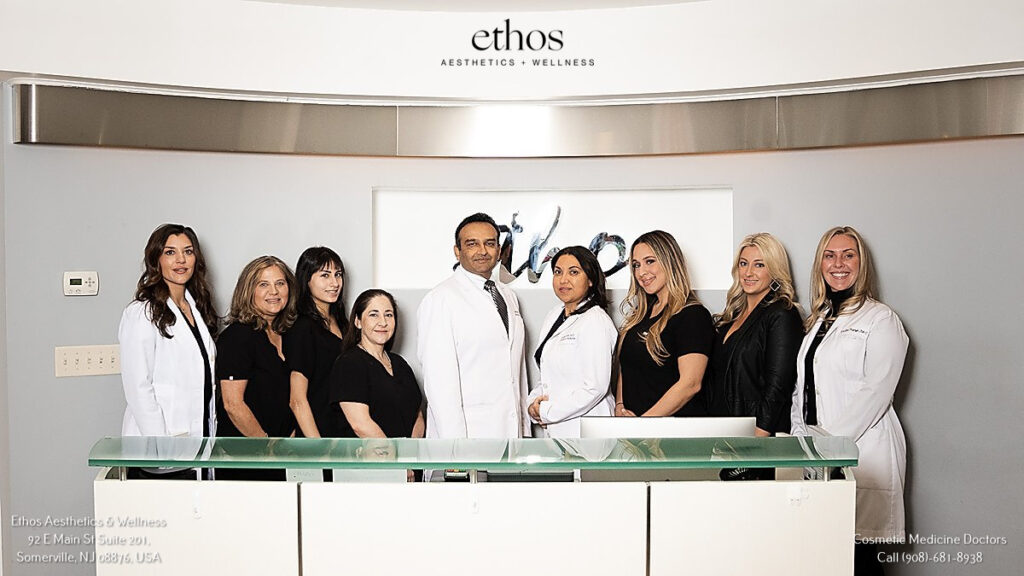
At Ethos Aesthetics + Wellness, led by the renowned Dr. Hardik Soni and his expert team, we understand the art of lip enhancement.
Whether you’re seeking to add volume with our diverse range of lip fillers or prefer to return to your natural look by dissolving existing fillers, we’re here to guide you every step of the way.
Trust us to tailor a solution that celebrates your unique beauty. Book online or schedule a consultation with us today!
